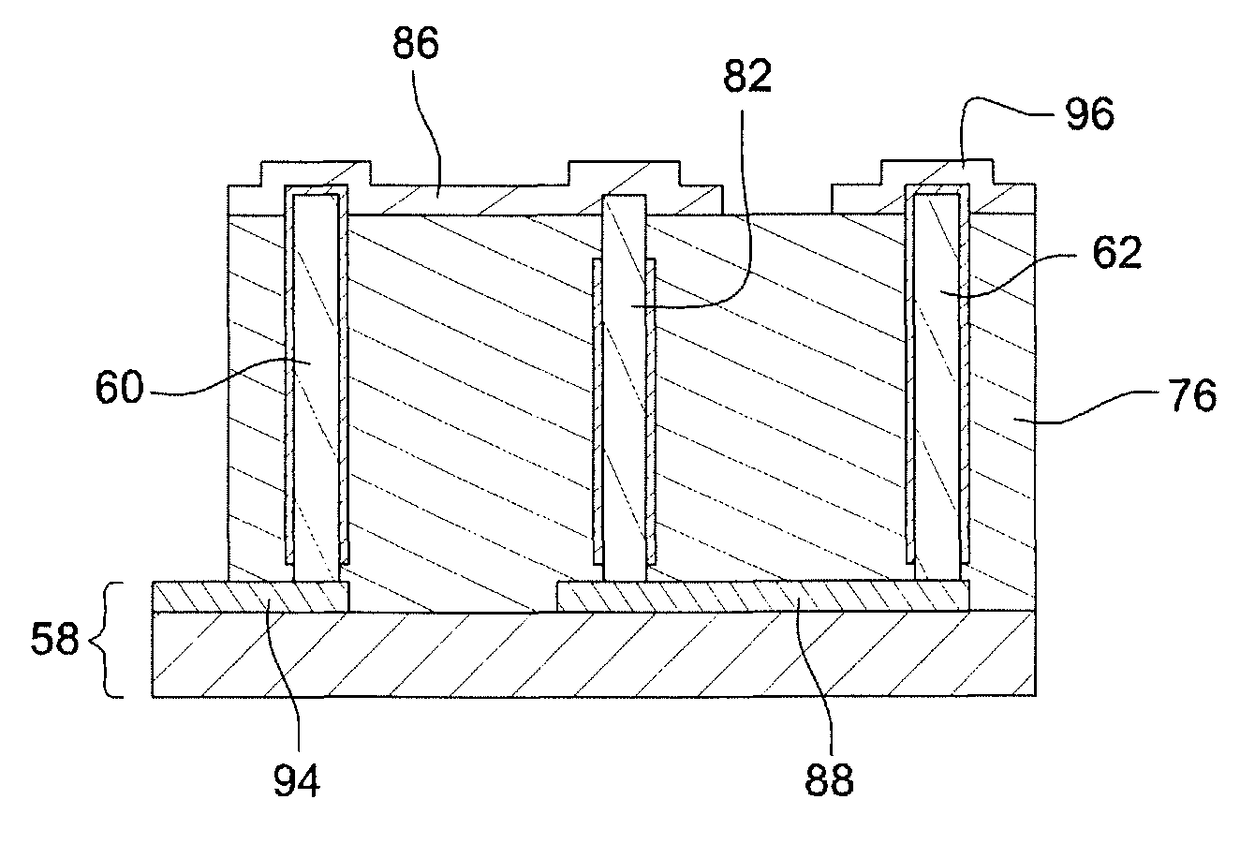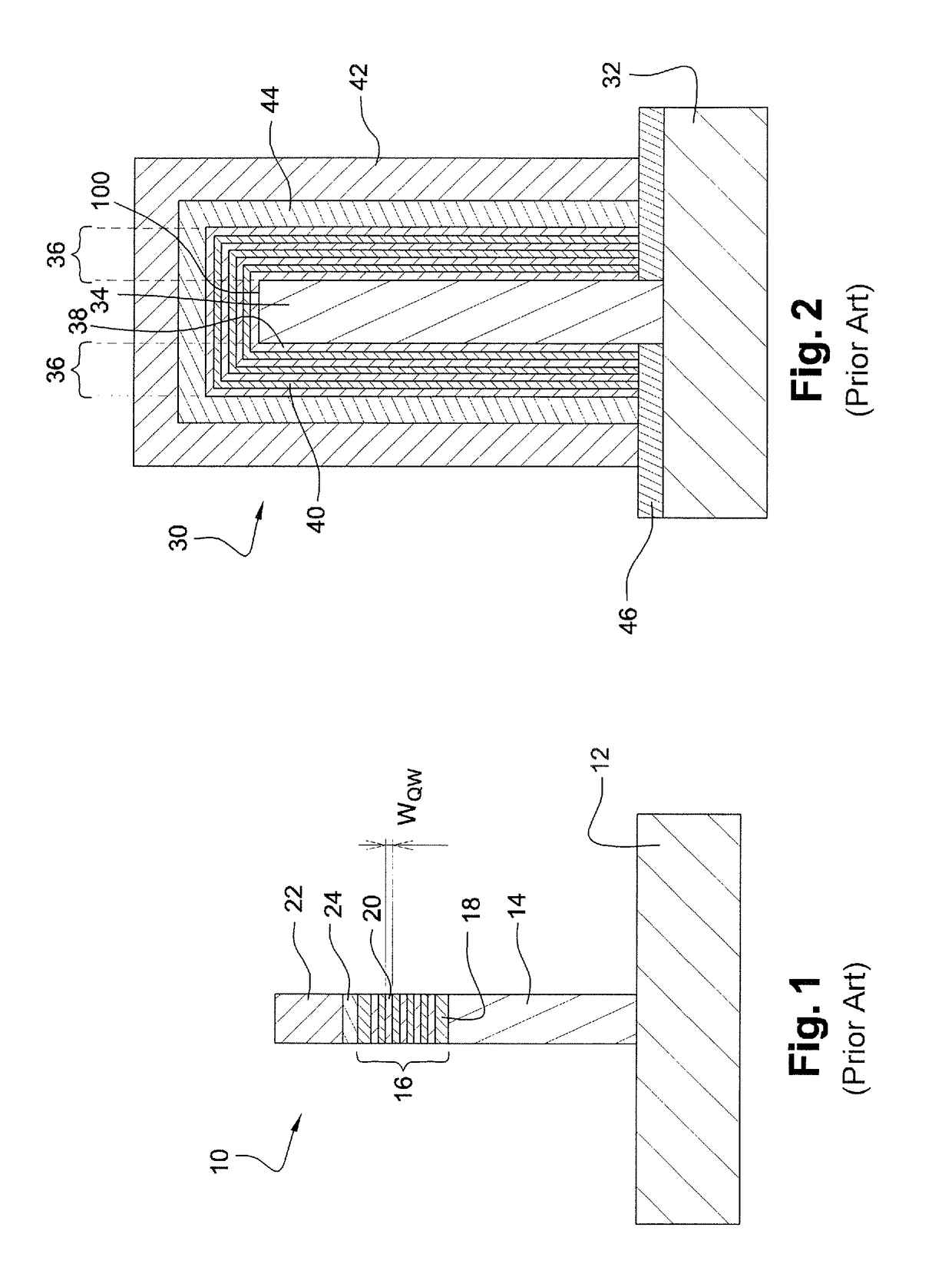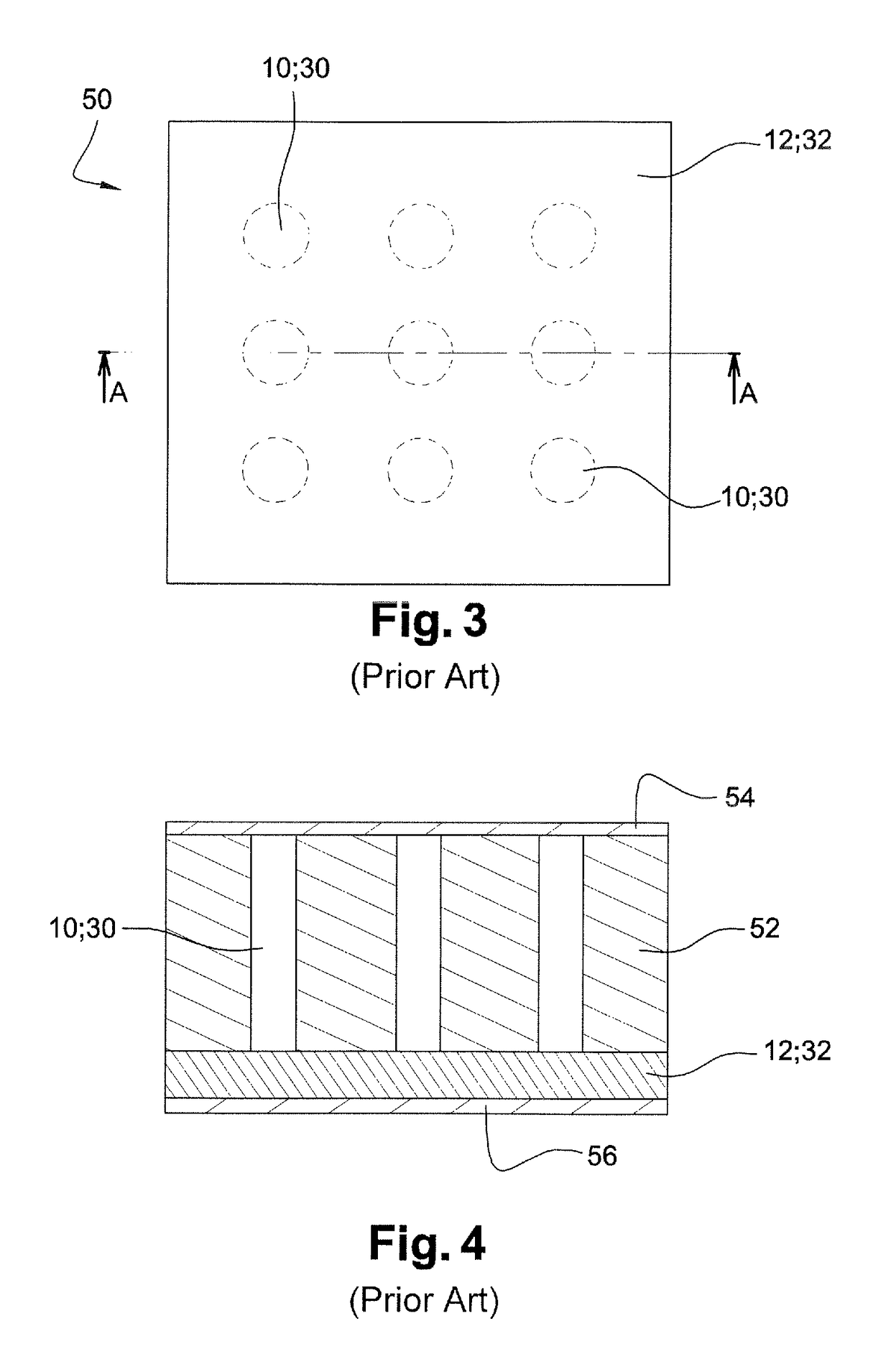In-series electrical connection of light-emitting nanowires
a technology of light-emitting nanowires and series connections, which is applied in the direction of basic electric elements, electrical apparatus, semiconductor devices, etc., can solve the problems of connecting nanowires, and achieve the effect of no efficiency droop, good confinement of charge carriers
- Summary
- Abstract
- Description
- Claims
- Application Information
AI Technical Summary
Benefits of technology
Problems solved by technology
Method used
Image
Examples
first embodiment
[0099] connection nanowire 82 is made of an electrically-conductive material. For example, connection nanowire 82 is metallic, which enables to obtain both a connection of high quality and a perfect compatibility with any type of nano-LED, whatever the materials and the structure of the hole and electron injection areas.
[0100]This however has the disadvantage of complicating the manufacturing process of an array of nano-LEDs since two types of manufacturing processes have to be provided, one for the nano-LEDs and the other for the connection nanowires.
second embodiment
[0101] the connection nanowire is a nano-LED which has then been modified be used as a connection nanowire. This enables to manufacture all the nanowires, nano-LEDs, and connection nanowires, during a same growth process.
[0102]An application of the second embodiment to the core / shell nano-LEDs of FIG. 2 is now described in relation with FIGS. 6a, 6h, and 6c.
[0103]A nano-LED 30 is thus modified to remove a portion of shell 42 from head 84 thereof, and especially at least the portion of shell 42 covering upper surface 100 of core 34 of the nano-LED. This thus disengages core 34, which is electrically compatible with shell 42 forming a hole injection area of nano-LEDs 60, 62, and which is covered with first area 86 of the series connection, for example, a metal contact 86.
[0104]In the example illustrated in FIG. 6a, the top of nano-LED 30 has been removed to disengage core 34 while leaving in contact active area 36, as well as volumes 42 and 44, with conductive area 86.
[0105]In the ex...
PUM
 Login to View More
Login to View More Abstract
Description
Claims
Application Information
 Login to View More
Login to View More - R&D
- Intellectual Property
- Life Sciences
- Materials
- Tech Scout
- Unparalleled Data Quality
- Higher Quality Content
- 60% Fewer Hallucinations
Browse by: Latest US Patents, China's latest patents, Technical Efficacy Thesaurus, Application Domain, Technology Topic, Popular Technical Reports.
© 2025 PatSnap. All rights reserved.Legal|Privacy policy|Modern Slavery Act Transparency Statement|Sitemap|About US| Contact US: help@patsnap.com



